Bride Kidnapping in Germany

Sometimes during a bachelor party, the bachelor is “kidnapped.” In Germany, the bride is always kidnapped. It might sound crazy, but it’s about fun and games. The night before the wedding, the bride is taken to a pub with all her friends and family. The groom must visit various bars to find his beautiful soon-to-be wife. When he finds her, he must pay her “ransom” by buying drinks or performing romantic gestures.
(Image via Facebook)
Releasing Doves in the Philippines

In America, we used to release doves at the end of a wedding, but most people stopped. However, in the Philippines, couples still release doves. The doves represent harmony and peace and are always one male and one female. Usually, they’re placed in a basket which is opened by the couple by pulling on a cord together. How cute!
(Image via Facebook)
Stealing the Groom’s Shoes in India

In India, there’s nothing better than pranking your new family member. Before entering the wedding area, the groom removes his shoes as is custom. That’s when the eldest of the unmarried women from the bride’s side of the family attempt to steal them. The groom then has to get his shoes back while the bride’s family helps the women run off with them. Money is required to get his shoes back and continue with the wedding. This welcomes them into the family, and the cash signals them that he will take care of them as they are now his sisters, as well.
(Image via Facebook)
Sharing Sake in Japan
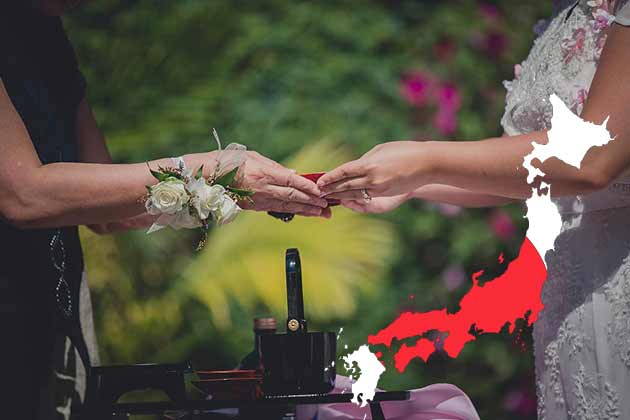
San san kudo is a ceremony that’s practiced at Shinto and Buddhist Japanese weddings. During this ceremony, the bride and groom take three sips of sake from three stacked cups. After the sips, both sets are given to the parents to sip, and the ritual is complete after a total of nine sips. The first three represents the three couples – the bride and groom, the groom’s parents, and the bride’s parents. The second three represent three human flaws: hatred, passion, and ignorance. Then, the final three equates to nine, which is a lucky number in Japan.
(Image via Facebook)
Handfasting in Ireland

The whole “tie the knot” thing in the United States dates back to this ceremony. In Celtic weddings, two partners hold hands with their wrists crossed, and a ribbon is wound around their wrists to create an infinity symbol. Once tied, it symbolizes the union of two people for the rest of their lives. Maybe this is one we should use in our weddings?
(Image via Facebook)
Geese Giving in Korea
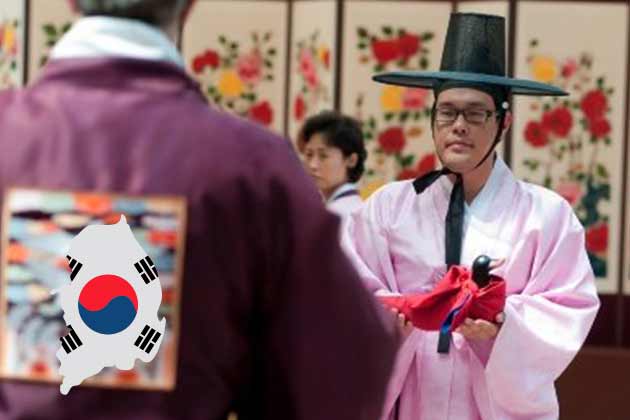
Korea weddings are fowl, and by that, we mean that there’s a lot of geese involved. In modern Korean weddings, the husband and wife exchange a pair of wild geese made from wood. Some couples still adhere to tradition, which requires the groom to give a wooden goose (kireogi) to his mother-in-law. The symbolism behind this is geese are monogamous. Even if one dies, the other won’t seek a new partner.
(Image via Facebook)
Sponsors of the Wedding in Mexico
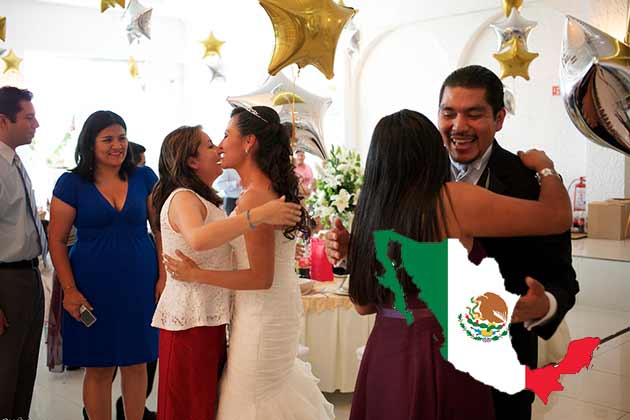
At a Mexican wedding, there are Padrinos and Madrinas. These are godparents and sponsors of the wedding. They help with different aspects of the wedding including the flowers, the ceremony, the cake, and the bride’s dress. The madrina carries a wine glass for the toast. The padrinos carry a prayer book, a rosary, a guestbook, and an embroidered kneeling pillow. The bride may also choose a madrina de velacion to guide her throughout her married life with wise advice. The godparents further help with the cost of the wedding ceremony.
(Image via Flickr)
Tasting in Nigeria

This is a Yoruba tradition, one of the peoples of Nigeria. During the ceremony, the couples are encouraged to eat something bitter, sour, hot, and sweet. It promises each other that they’ll be together for better and worse throughout the marriage. Most weddings use lemon, vinegar, cayenne pepper, and honey.
(Image via Pinterest)
The Blackening in Scotland
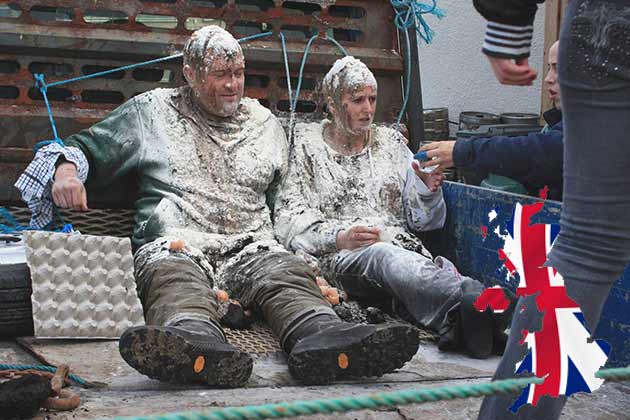
The day before the wedding, the bride and groom are “captured” by friends and family. The couple is then covered in food and a variety of other sticky substances. Finally, they’re paraded around for everyone to see on the back of an open-backed truck where people bang pots and pans to bring attention to the two. There aren’t any strict rules other than “cover them up.” It’s no surprise that copious amounts of alcohol are usually involved. The whole thing is done to avoid evil spirits and bring good luck.
(Image via Facebook)
Money Dance in Poland
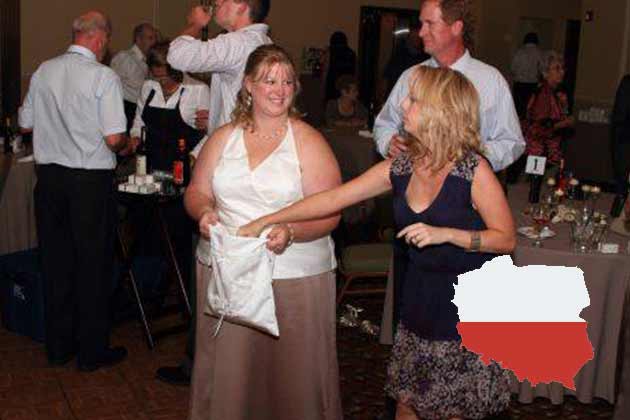
American weddings have a dance, but nothing like this. In Poland, the couple invites guests to dance with them one-on-one during the reception for a price. The maid of honor and best man collect donations so they can dance with the new husband and wife. This is designed to help kick-start the couple’s financial life.
(Image via Facebook)
Ring of Flowers in Pakistan
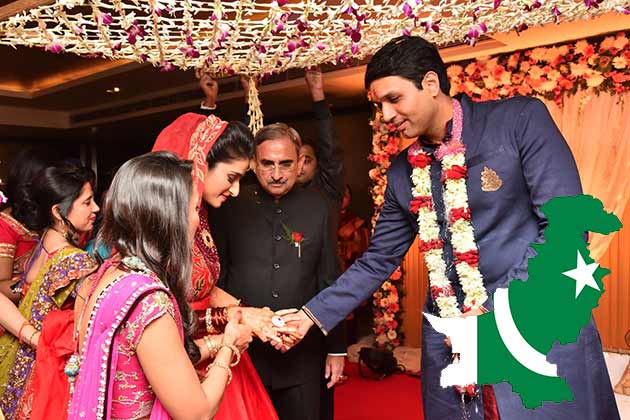
Flowers are essential for weddings. Unlike our ceremonies, Pakistani weddings involve wearing a heavy flower garland. This dates back to the bridegroom wearing a veil of flowers to cover his face completely in order to pick her up on the night of the wedding called a sehra. Today, grooms choose to wear the heavy flower wreath once he’s arrived. The bride will often participate with her new husband and wear one of her own.
(Image via Facebook)
Shouting “Gorka!” in Russia
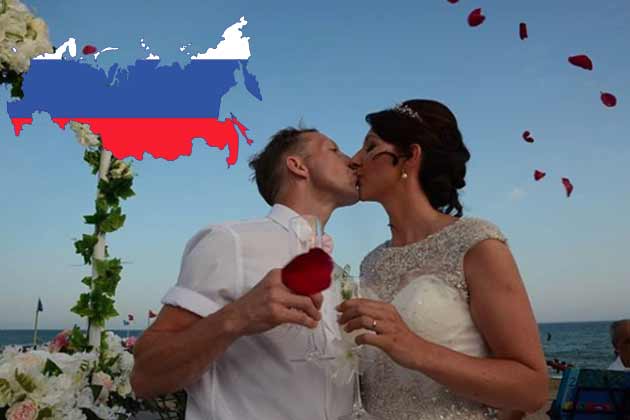
If you’re at a Russian wedding, get ready to shout “gorka!” See, women in Russia didn’t have to consent to marriage. They were given to men whom they didn’t know. The bride would say goodbye to her home, and the groom would give up being a bachelor. This would create a little bitterness between the couple, which was softened with a kiss. Nowadays, the tradition is mimicked by having the couple drink something bitter before drinking – either vodka or champagne. After drinking, they cry “bitter!” in Russian and the couple kiss to take the edge off the bitterness.
(Image via Instagram)
A Croquembouche in France
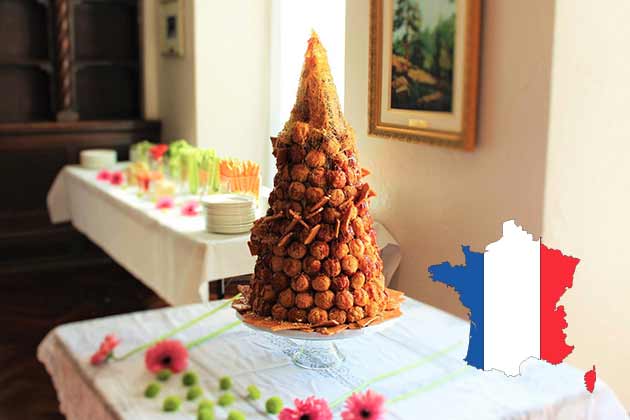
Instead of a cake, France serves a croquembouche. This is a massive tower of cream-filled, puffed pastries that can be dipped in sweet sauces. Like a wedding cake, it’s decorated with flowers and ribbons but can also be decorated with nuts, fruit, and glazes.
(Image via Facebook)
Black Rum Cake in Jamaica

Rum, cake, and fruit are all delicious, and Jamaica has one of the best traditions involving all these things. Instead of a huge wedding cake, Jamaicans choose a dense cake called a “black cake” due to its dark color. Instead of chocolate, the color comes from dried, macerated fruits. Prunes, currants, raisins, and carries are chopped and soaked in rum or wine. The fruit is added to the cake batter along with spices to create a truly unique cake that tastes like heaven.
(Image via Pinterest)
Spitting on the Bride in Kenya
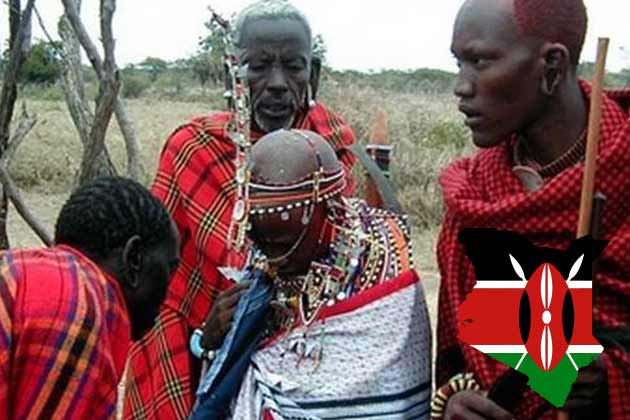
Kenyan marriages are celebrated in a unique way. The bride dresses to the nines and wears a bold, colorful necklace with beads and shells. At the ceremony, her head is shaved, and lamb fat and oil are applied to her head. The father of the bride then blesses his daughter by spitting on her head and breasts. Even though pitting is a symbol of disgrace in many countries, it’s thought to bring good luck in the Massai nation.
(Image via Facebook)
 Author
Alot Living Team
Last Updated: July 13, 2018
Author
Alot Living Team
Last Updated: July 13, 2018
